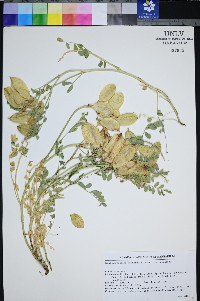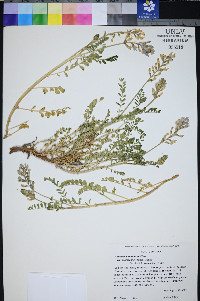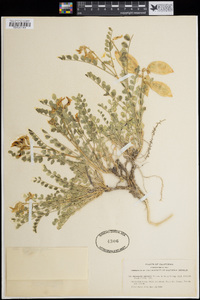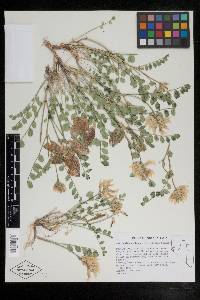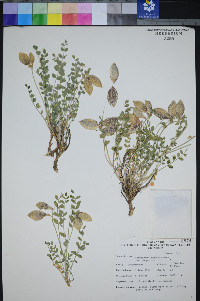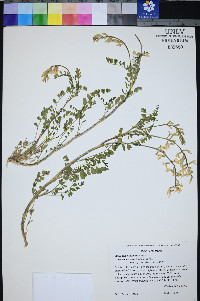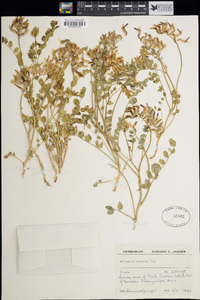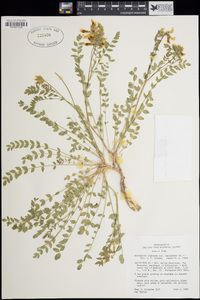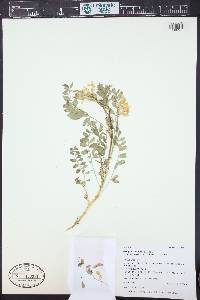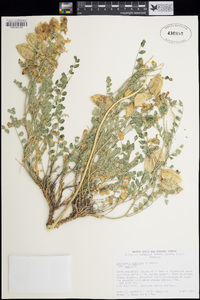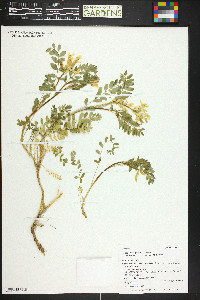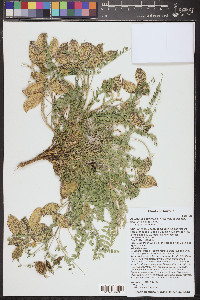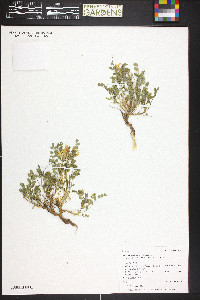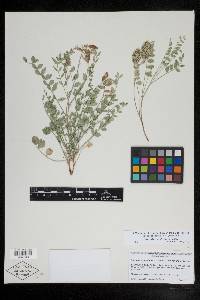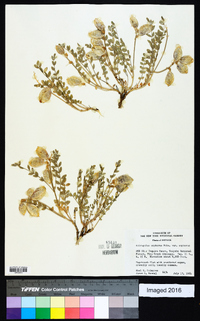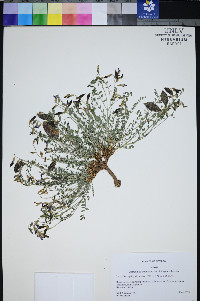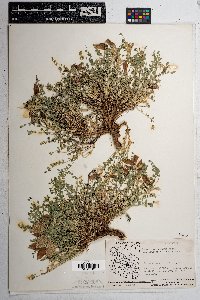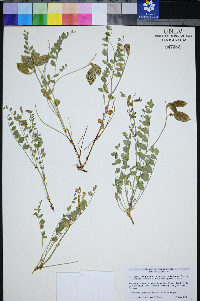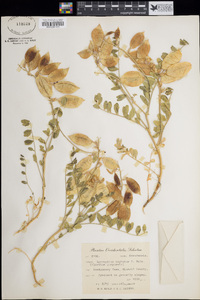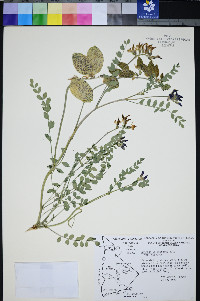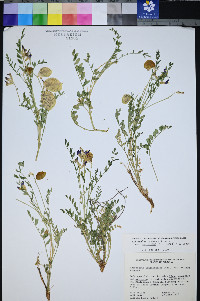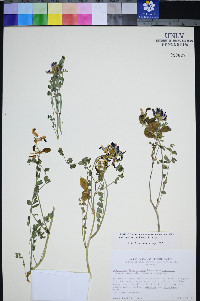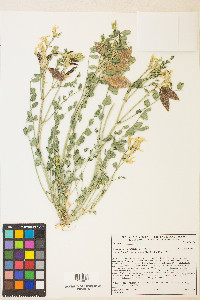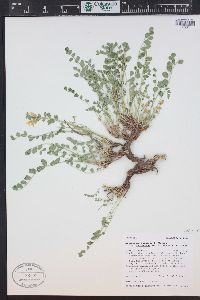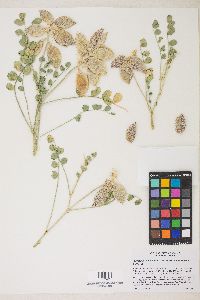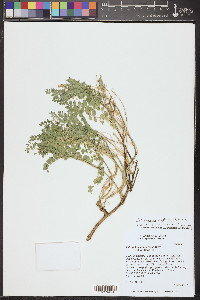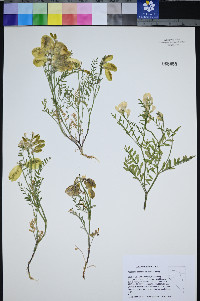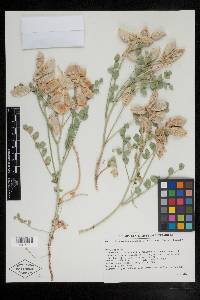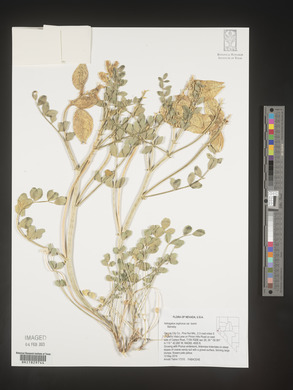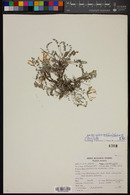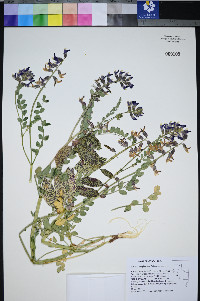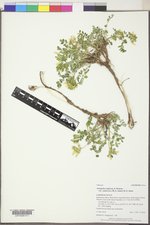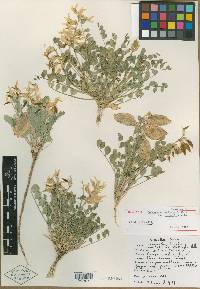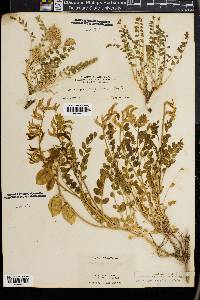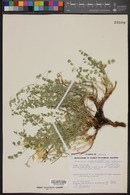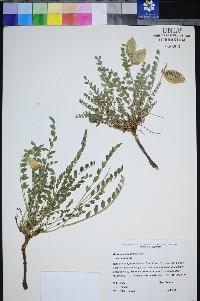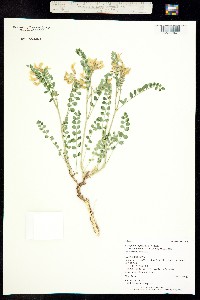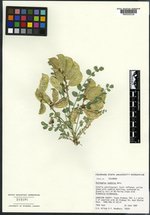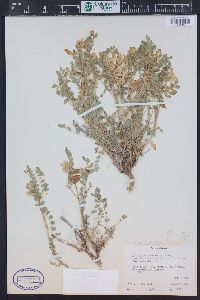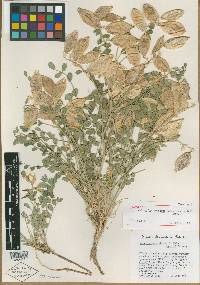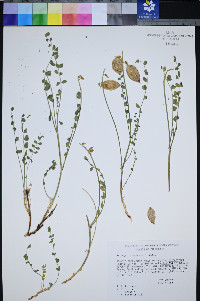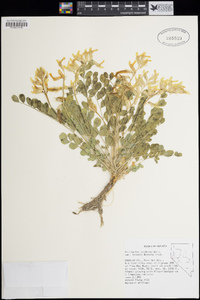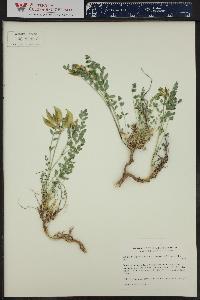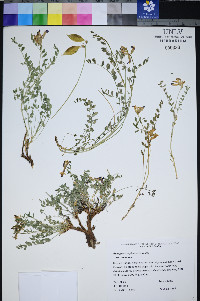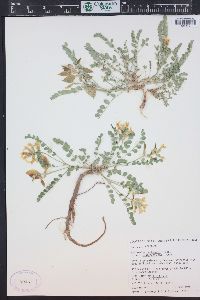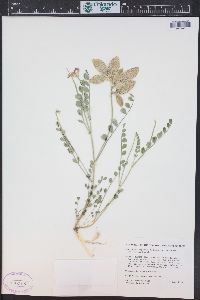Astragalus oophorus
|
|
|
|
Family: Fabaceae
Egg Milk-Vetch, more...egg milkvetch
|
General: Perennial; stems several or numerous, 5-25 cm long, decumbent and ascending; herbage green, somewhat glaucous, appearing glabrous but bearing a few appressed basifixed hairs; caudex short, woody. Leaves: Alternate, odd-pinnate, 5-15 cm long; leaflets 9-25, oval, ovate, or nearly orbicular, 4-20 mm long, a few appressed hairs on leaf rachis and leaflet margins, otherwise glabrous, margins entire, apex obtuse or notched, often minutely mucronate; stipules distinct, the lowest almost fully clasping the stem, the upper ones somewhat clasping; blades petiolate. Flowers: Inflorescence an axillary raceme, loosely 10-25 flowered; peduncle 4-19 cm long; calyx 11-14 mm long, pilose- tomentose, the teeth 2-4 mm long; corolla pink-purple, pinkish lavender, yellowish suffused with lilac, or creamy white; banner 12-24.5 mm long, the wings the same or somewhat shorter; flowers April-June. Fruits: Legume, spreading or pendulous, sometimes lying on the ground, ellipsoid or ovoid-ellipsoid, bladdery-inflated, 3-5.5 cm long, 1-2 cm in diameter, pale green, commonly mottled with reddish purple, becoming straw colored or brownish, glabrous; legumes elev Ecology: Sagebrush, pinyon-juniper, ponderosa pine forests, often in sandy or gravelly soils; 1400-2400 m (4500-8000 ft); Apache, Coconino, Mohave, and Yavapai counties; southwestern U.S. Notes: Ours, as here described, is var. caulescens. Astragalus hallii (Hall-s milkvetch) [=A. famelicus] has stems 15-50 cm long, prostrate, spreading to weakly ascending; herbage is greenish or ash colored, minutely strigose to villous with basifixed hairs; leaves are 2-9 cm long, with mostly 13-27 leaflets, these oblong-oblanceolate or oblong-obovate, 3-13 mm long, yellowish green and glabrous above; racemes are 10-28 flowered, the corolla reddish violet, pink-purple or dull lilac; the banner is 13-18 mm long, the wings slightly shorter; legumes are generally curved downward, broadly ovoid to ellipsoid, more-or-less inflated, 1.2-2.7 cm long, greenish or purplish, minutely strigose. It occurs mostly in open pine forests at 1700-2600 m (5500-8500 ft). Astragalus subcinereus (Siler-s milkvetch) is spreading or prostrate, with stems 15-70 cm long; herbage is greenish, seldom grayish, strigose-villous to hirsute (sometimes sparsely so) with basifixed hairs; leaves are 1.5-8.5 cm long with 13-21 leaflets, these narrowly oblong- oblanceolate to oblong-obovate, 2-16 mm long, nearly glabrous above or equally pubescent on both surfaces, apex obtuse to notched; racemes are densely 10-37 flowered; corolla is whitish or yellowish, veined or suffused with purple; banner is 6.5-9 mm long, the wings slightly longer or shorter; legumes are widely spreading or declined, ovoid-ellipsoid to nearly globose, strongly inflated, 1.2-2.7 cm long, green or purple tinged, brightly red-mottled, minutely strigose or villous. It occurs in openings on hillsides, ponderosa pine forests, pinyon-juniper woodlands, and oak thickets at 1500-2700 m (5000-9000 ft). Editor: Springer et al. 2008 |


